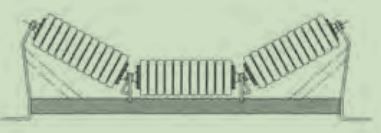 Afrikaans
Afrikaans  Albanian
Albanian  Amharic
Amharic  Arabic
Arabic  Armenian
Armenian  Azerbaijani
Azerbaijani  Basque
Basque  Belarusian
Belarusian  Bengali
Bengali  Bosnian
Bosnian  Bulgarian
Bulgarian  Catalan
Catalan  Cebuano
Cebuano  Corsican
Corsican  Croatian
Croatian  Czech
Czech  Danish
Danish  Dutch
Dutch  English
English  Esperanto
Esperanto  Estonian
Estonian  Finnish
Finnish  French
French  Frisian
Frisian  Galician
Galician  Georgian
Georgian  German
German  Greek
Greek  Gujarati
Gujarati  Haitian Creole
Haitian Creole  hausa
hausa  hawaiian
hawaiian  Hebrew
Hebrew  Hindi
Hindi  Miao
Miao  Hungarian
Hungarian  Icelandic
Icelandic  igbo
igbo  Indonesian
Indonesian  irish
irish  Italian
Italian  Japanese
Japanese  Javanese
Javanese  Kannada
Kannada  kazakh
kazakh  Khmer
Khmer  Rwandese
Rwandese  Korean
Korean  Kurdish
Kurdish  Kyrgyz
Kyrgyz  Lao
Lao  Latin
Latin  Latvian
Latvian  Lithuanian
Lithuanian  Luxembourgish
Luxembourgish  Macedonian
Macedonian  Malgashi
Malgashi  Malay
Malay  Malayalam
Malayalam  Maltese
Maltese  Maori
Maori  Marathi
Marathi  Mongolian
Mongolian  Myanmar
Myanmar  Nepali
Nepali  Norwegian
Norwegian  Norwegian
Norwegian  Occitan
Occitan  Pashto
Pashto  Persian
Persian  Polish
Polish  Portuguese
Portuguese  Punjabi
Punjabi  Romanian
Romanian  Russian
Russian  Samoan
Samoan  Scottish Gaelic
Scottish Gaelic  Serbian
Serbian  Sesotho
Sesotho  Shona
Shona  Sindhi
Sindhi  Sinhala
Sinhala  Slovak
Slovak  Slovenian
Slovenian  Somali
Somali  Spanish
Spanish  Sundanese
Sundanese  Swahili
Swahili  Swedish
Swedish  Tagalog
Tagalog  Tajik
Tajik  Tamil
Tamil  Tatar
Tatar  Telugu
Telugu  Thai
Thai  Turkish
Turkish  Turkmen
Turkmen  Ukrainian
Ukrainian  Urdu
Urdu  Uighur
Uighur  Uzbek
Uzbek  Vietnamese
Vietnamese  Welsh
Welsh  Bantu
Bantu  Yiddish
Yiddish  Yoruba
Yoruba  Zulu
Zulu Understanding V-Belt Drive Systems and Their Pulley Mechanisms for Efficient Power Transmission
Understanding V-Belt Drive Pulleys Essential Components of Mechanical Performance
In the realm of mechanical engineering and industrial machinery, the efficient transmission of power is crucial for ensuring optimal performance. One of the key components that facilitate this process is the V-belt drive pulley system. This article explores the functionality, design, advantages, and applications of V-belt drive pulleys, offering insight into their vital role in various machinery.
What is a V-Belt Drive Pulley?
A V-belt drive pulley is a wheel with a V-shaped groove that is used in combination with V-belts. The V-belt, due to its trapezoidal cross-section, fits snugly into the groove of the pulley. This design allows for effective grip on the belt, facilitating power transfer between rotating shafts. The V-belt drive system utilizes the friction between the belt and pulley to achieve the desired rotational movement and torque.
Components of a V-Belt Drive System
A typical V-belt drive system consists of several key components
1. V-Belt This is the flexible loop that transmits power. Made from rubber or reinforced materials, V-belts are designed to handle varying loads while maintaining flexibility and strength. 2. Pulleys The system usually includes two or more pulleys. The driver pulley connects to the power source (like a motor), while the driven pulley connects to the component requiring power (like a fan or conveyor).
3. Tensioning System To ensure the V-belt maintains adequate tension for effective power transfer, a tensioning system may be employed. This can be manual or automatic.
4. Bearings Bearings support the pulleys, allowing them to rotate smoothly with minimal friction.
Advantages of V-Belt Drive Pulleys
The V-belt drive pulley system offers several advantages that make it a preferred choice in various applications
1. High Efficiency Due to their design, V-belts can transmit power efficiently with minimal slippage, thus maximizing energy transfer.
2. Versatility V-belt systems can be used in various machinery, from industrial equipment to household appliances, making them incredibly versatile.
4. Cost-Effective V-belt systems are generally less expensive to manufacture and maintain compared to other power transmission systems.
v belt drive pulley

5. Cushioning Effect The elasticity of the V-belt helps absorb shocks, protecting machinery from sudden loads and extending the lifespan of mechanical components.
Design Considerations
When designing a V-belt drive system, several factors must be taken into account to ensure optimal performance
1. Pulley Size and Diameter The size of the pulleys determines the speed and torque of the system. Larger pulleys generally provide higher torque but lower speed, while smaller pulleys provide the opposite.
2. Belt Length The distance between the pulleys must be calculated to maintain proper tension in the belt while avoiding excessive slack.
3. Alignment Proper alignment of the pulleys is critical to prevent premature wear and inefficient power transfer.
4. Operating Conditions Environmental factors such as temperature, humidity, and the presence of dust or chemicals can affect the performance and lifespan of V-belts and pulleys.
Applications of V-Belt Drive Pulleys
V-belt drive pulleys are widely used across various industries due to their adaptability. Some common applications include
1. Agricultural Machinery In tractors and harvesters, V-belt systems are employed to drive various components, such as pumps and augers.
2. Manufacturing Equipment Conveyor belts, mixers, and compressors often utilize V-belt drive systems for efficient operation.
3. Automotive Industry V-belts are critical in vehicles for connecting components like the alternator, water pump, and air conditioning compressor.
4. Home Appliances Machines such as washing machines and HVAC systems often use V-belt drives to operate efficiently.
Conclusion
V-belt drive pulleys are integral to the successful functioning of a wide array of mechanical systems. Their efficient power transmission capabilities, combined with their versatility and cost-effectiveness, make them a staple in both industrial and domestic applications. Understanding their design and operating principles is essential for engineers and technicians aiming to optimize machinery performance and reliability. As technology advances, the evolution of V-belt systems continues to play a significant role in the development of more efficient mechanical solutions.
-
Revolutionizing Conveyor Reliability with Advanced Rubber Lagging PulleysNewsJul.22,2025
-
Powering Precision and Durability with Expert Manufacturers of Conveyor ComponentsNewsJul.22,2025
-
Optimizing Conveyor Systems with Advanced Conveyor AccessoriesNewsJul.22,2025
-
Maximize Conveyor Efficiency with Quality Conveyor Idler PulleysNewsJul.22,2025
-
Future-Proof Your Conveyor System with High-Performance Polyurethane RollerNewsJul.22,2025
-
Driving Efficiency Forward with Quality Idlers and RollersNewsJul.22,2025





























